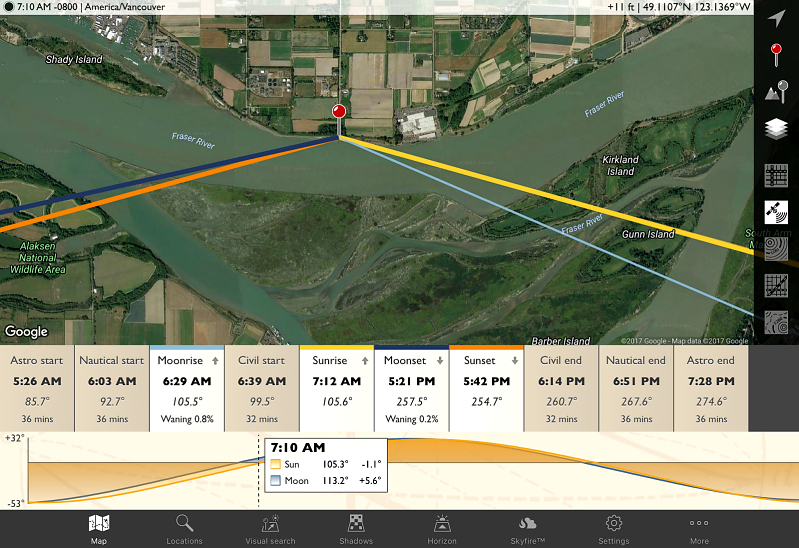As a photographer, the position of the sun (or the moon) at different times of the day is something that concerns you. Knowing when and from which direction either will rise or set, is important information particularly if you shoot landscapes. You can certainly check the local newspaper or google sunrise and set times for your location. But how about having this information at your finger-tips for your exact location, anywhere in the world? How about being able to predict exactly where the sun or moon will rise or set on any given day in relation to a particular foreground subject? How about being able to search for exact time when the sun or moon will be in a particular position in the sky?
I carry this information in my pocket, everywhere I go, in the form of an incredibly useful app for iOS (also Android) called “The Photographer’s Ephemeris”. It’s available for about $12 from the iTunes store. If you shoot landscapes, this could well be the best 12 bucks you spend all year.
The basic functions are easy to master: sunrise/sunset and moonrise/moonset times and directions are all pretty straightforward. More advanced functions such as searching for the specific sun/moon positions might require a glance through the online documentation, but that’s not really difficult either. Over the years, additional functionality has been added to the program: there is now a night mode which can be used to predict the rise time and position of the Milky Way and Galactic Center if you are so inclined. There are other applications available with more extensive functionality, but “TPE” and its intuitive interface is my go-to app to answer these basic questions.
Have a look at the screen capture below: it’s set for the time and place of the image above (a few miles from my home). The yellow line on the right shows the direction from which the Sun will rise, while the thin blue line shows the current direction to the Moon.

The band below the map indicated the times for various daily events of interest to photographers: sunrise/sunset, moonrise/moonset, the start and end of Civil twilight (the time for all those amazing blue hour shots), as well as the end of, and beginning of Astronomical twilight (between these times the sky will be dark enough for those amazing star-trail and Milky Way shots). Finally, the box below this band shows the current time (7:10am) and indicates the current direction and altitude of the moon and sun (the sun is just below the horizon, the moon ~6 degrees above).
Using the built-in compass in my iPhone ahead of time gave me the general compass direction of the mountain peak in the distance, and using TPE to search for a time just before sunrise when the moon would be high enough in the sky, in the appropriate direction to complete the image I had in my mind gave me several days when these conditions would be met. Now all I had to do was show up and hope for clear skies… not all that common in Vancouver during the winter! On this day however, the stars aligned and I was treated to one of the most spectacular pre-dawn displays I have ever seen from this location.
A side-note: If you want to include a crescent moon in your pre-dawn/sunrise images, start looking for this a day or two ahead of the new moon. A few days later, you should be able to catch a crescent moon hanging above the western horizon in a cobalt blue sky, some time after the sun has set. The rise and set directions for the moon vary greatly over the course of each month; much more so than the sun on it’s annual trek. So, while the newspaper may be able to tell you when the moon will rise or set, you will need TPE to tell you where it will rise and set each day. There is also a free web app version if you would like to give it a try before buying, just go to photoephemeris.com.



